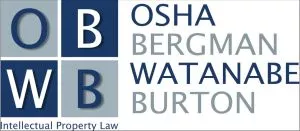- within Intellectual Property topic(s)
- in United States
- with readers working within the Technology, Pharmaceuticals & BioTech and Retail & Leisure industries
Patent eligibility, as defined by 35 U.S.C. § 101, includes new and useful processes, machines, manufactures, and compositions of matter. Various Supreme Court decisions have sought to define the scope of this statute, most notably in Alice Corp. v. CLS Bank Int'l, which provided the current two-step framework for determining patent eligibility. The first step involves determining if the claimed subject matter is directed towards a judicial exception, such as an abstract idea, and the second step involves determining if the claims recite significantly more than the judicial exception. The Alice framework has been used in many court cases over the past decade, including a controversial decision issued in August of this year by the United States Court of Appeals for the Federal Circuit (CAFC).
In Powerblock Holdings, Inc. v. iFit, Inc.1, the CAFC reversed a decision of the U.S. District Court for the District of Utah that determined almost all claims of U.S. Patent No. 7,578,771 were ineligible under 35 U.S.C. § 101. The CAFC concluded that the District Court erred in applying step one of the Alice framework, specifically by ignoring meaningful limitations in independent claim 1.
Background
PowerBlock filed a lawsuit alleging that iFit, Inc. infringed PowerBlock's '771 patent. The patent relates to a system for selecting and adjusting the weight of a selectorized dumbbell, including an electric motor that adjusts the weight of the selectorized dumbbell in response to a desired weight selected by a user. The '771 patent describes the automated weight adjustment as safer and more convenient than weight adjustment performed using conventional manual dumbbells and conventional selectorized dumbbells.
Turning to the question of whether the patent was valid under § 101, the District Court applied the Alice framework. In step one, the court determined that the independent claims were directed to an abstract idea using generic components, rather than to a particular system or method. In step two, the court determined that the independent claims did not add significantly more to the abstract idea.
In its appellate decision, the Federal Circuit held that the limitations of independent claim 1 "provide enough specificity and structure to satisfy § 101" according to step one of the Alice framework. In particular, the court explained that independent claim 1 is limited to a particular system, i.e., a selectorized dumbbell, that provides sufficient description for performing automated weight stacking, i.e., with an electric motor that "physically moves the selector into the different adjustment positions." The court reached the same conclusion of patent eligibility for the other claims in question.
The Federal Circuit also addressed the potential for contradiction between the present decision and the decisions in two cases referenced by the District Court. First, the Federal Circuit disagreed with the trial court's assertion that the '771 patent is analogous to the patent at issue in University of Florida Research Foundation, Inc. v. General Electric Co., 916 F.3d 1363 (Fed. Cir. 2019), which claimed a process for automating the transfer of physiologic data from bedside machines to a graphical user interface to increase efficiency and reduce human error. The Federal Circuit explained that, in contrast, the '771 patent represents an improvement to a machine rather than mere automation.
Similarly, the appellate court disagreed with iFit's assertion that the '771 patent is analogous to the patent at issue in Chamberlain Grp., Inc. v. Techtronic Indus. Co., 935 F.3d 1341, 1347 (Fed. Cir. 2019), which describes a system for wirelessly controlling a moveable barrier. The Federal Circuit asserted that the '771 patent supplies further specificity, particularly regarding how the selector adjusts the weight, which justifies the '771 patent being recognized as patent eligible.
Contradictory Guidance and Ongoing Debate
Though many professionals within the legal community agreed with the outcome of the Federal Circuit's decision, there was no clear consensus on what distinguished this determination of patent eligibility from other CAFC decisions that came down on the side of patent ineligibility.
Perhaps unsurprisingly, iFit filed a petition on September 10, 2025, for rehearing and rehearing en banc. In the petition, iFit argued that the present decision is contrary to the court's prior decision in CardioNet, LLC v. InfoBionic, Inc., 955 F.3d 1358 (Fed. Cir. 2020), as applied in Yu v. Apple Inc., 1 F.4th 1040 (Fed. Cir. 2021). Namely, iFit argued that the patent at issue in Yu v. Apple, which was deemed patent ineligible,is analogous to the '771 patent in that conventional mechanical components perform basic functions.
Notably, Circuit Judge Stoll authored both the Powerblock opinion and the CardioNet v. InfoBionic opinion. In CardioNet, the claims relate to a device with beat detectors that identify cardiac activity, technology that evaluates the identified cardiac activity, and technology that indicates whether cardiac activity is indicative of atrial fibrillation and/or atrial flutter. The Federal Circuit determined that the claims were directed to a patent-eligible improvement to a cardiac monitoring technology, identifying an improvement to a specific device as salient in the Alice step one analysis. Applying the same logic to the present case, it would seem that the '771 patent is similarly patent eligible as an improvement to a specific device, i.e., selectorized dumbbells.
In Yu v. Apple, the claims relate to a digital camera with image sensors and lenses that enhance the quality of a photo by combining images. Despite the physical components recited, the court determined that the claims were directed to the abstract idea of image manipulation. If the same logic was applied to the '771 patent, the selectorized dumbbell could be deemed analogous to the digital camera, i.e., a collection of generic components performing typical functions. Similarly, it could be argued that automated weight stacking enhances the experience of using the selectorized dumbbell without conferring patent eligibility.
Given the conflict between the Yu v. Apple and Powerblock decisions, it seems puzzling that Circuit Judge Taranto agreed with both filed opinions. Is the state of the law so confused and muddled that even Federal Circuit judges cannot follow or reconcile their decisions? One might attempt to argue that a safety improvement to a selectorized dumbbell is less abstract than a photo quality improvement to a digital camera, yet there are no plainly apparent legal distinctions between the claimed subject matter.
Conclusion
Though contradictions in legal guidance on patent eligibility are nothing new, Powerblock v. iFit has highlighted the contradictions in Federal Circuit jurisprudence. In particular, the treatment of generic components has varied widely in § 101 analyses, resulting in confusion over what claims are eligible and what claims are not. The only guiding principle seems to be that there is no guiding principle and that cases are decided on an ad hoc basis. Those involved in active court cases regarding § 101 would be well advised to review the various decisions authored by particular Circuit Judges and try to analogize their case to previous decisions by that jurist.
Footnote
1. Powerblock Holdings, Inc. v. iFit, Inc., No. 24-1177 (Fed. Cir. 2025).
The content of this article is intended to provide a general guide to the subject matter. Specialist advice should be sought about your specific circumstances.
[View Source]


